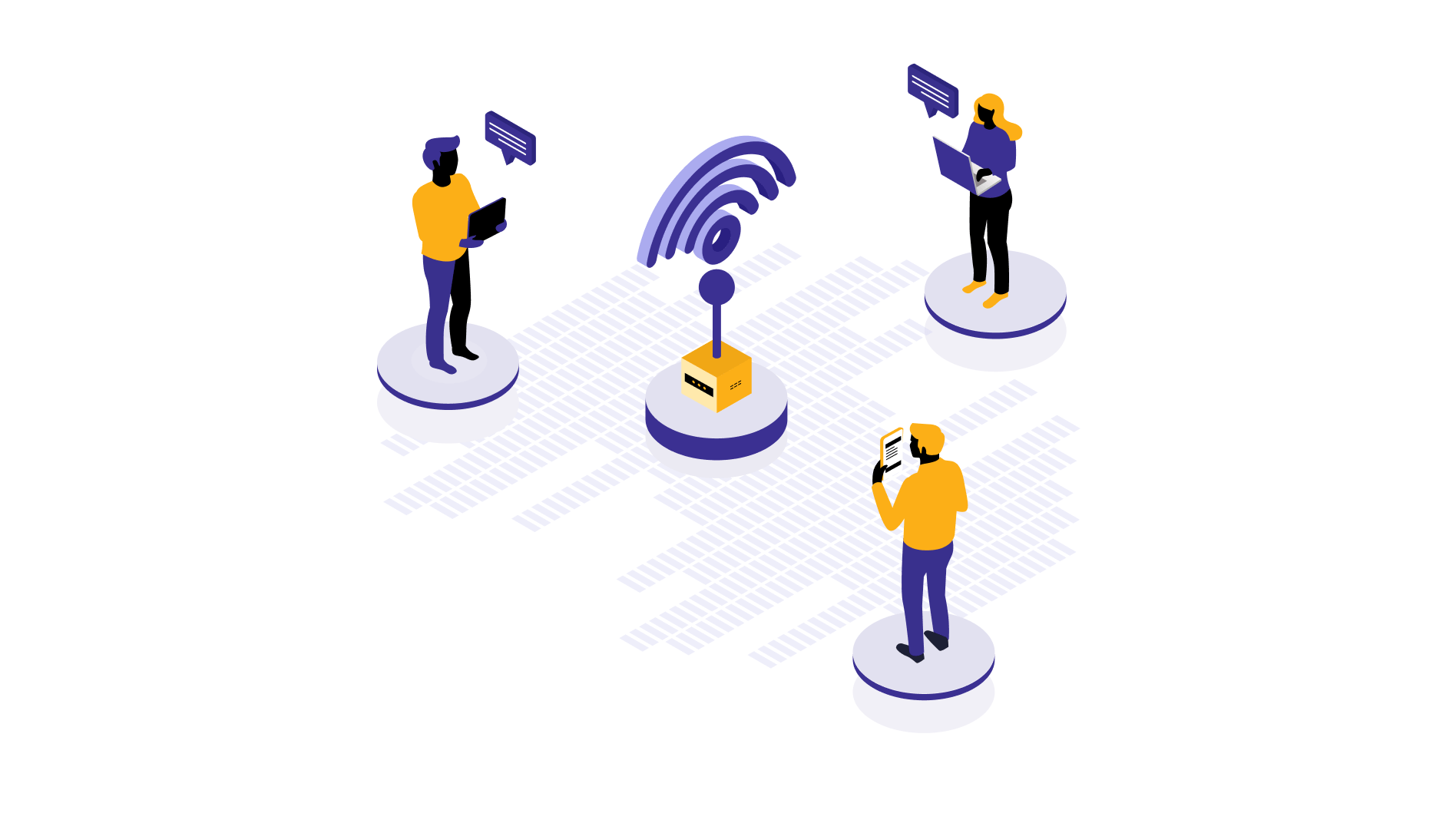Automatic speech recognition: Definition, algorithms and use cases
The blog is about how speech-to-text converters work and how businesses can use them to enable high-level analysis. Read the blog to know how you can set up automated speech recognition and receive accurate transcripts instantly.

Thulasi
April 9, 2024 |
8 mins

What is speech recognition?
In plain words, speech recognition is about transcribing an audio file or the audio part of a video into text format using computer software, a speech-to-text converter using machine learning OCR or AI technologies. It’s slightly different from voice recognition which is meant to understand and provide answers based on a person’s voice.
To understand this better, consider some examples like Siri, audio transcription services using Whisper to transcribe, voice search, or captioning services where the input is your voice and the application types it on screen before fetching results. That’s what speech-to-text conversion means.
It’s a combination of language, acoustic models, and electrical engineering to convert an audio signal into a text. Modern ASRs aren’t limited to transcribing English alone. They can transcribe and translate more than 200 languages, notwithstanding accent, diction, background noise, and other limiting factors.
How does speech recognition work?
The advancements in deep learning and natural language processing have become highly beneficial from how does AI help in decision making to advanced speech recognition technology. Even though speech recognition has been around since 1952, deep learning-based algorithms enable us to identify and label multiple speakers and can understand multiple languages, accents, and dialects, even with the presence of background noise.
ASR technology works similarly to how our human brains comprehend speech.
1 - One or multiple speakers begin a recorded conversation.
2 - This audio input is directly sent to a spectrogram generator which converts this into an audio spectrogram, something that machines can understand. A spectrogram is nothing but a visual representation of audio that looks like a signal wave with highs and lows. These highs and low points are due to the frequency variations in the audio variables. Any additional noise also gets removed here from the audio output.
3 - Then lies the acoustic model which is already trained on various speech inputs and its respective transcripts. This model will break down the audio input into its smallest unit called phonemes (the linguistic and phonetic representation of each letter) with the help of deep learning or statistical models like Hidden Markov.
4 - Then, these sets of phonemes are then passed over to the next model called the linguistic model (which might be usually connected with a decoder, which will suggest the top-most words suiting the phoneme combinations). This model converts these phonemes or alphabets into probable words and sentences. Like acoustic models, language models are trained on numerous sets of words and sentences. That’s how it decodes and transcripts the audio accurately despite the multiple probabilities present for a set of words or phonemes.
5 - The last part of a voice-to-text technology will be a punctuation and capitalization model which will identify where to end the sentence and capitalize the concurrent sentence. This way, your output will be easier to read and more accurate.
Speech recognition algorithms
Speech recognition technologies are often powered by the following two algorithms or a combination of both.
Hidden Markov algorithms
This algorithm uses statistical probabilities to determine the spoken words and sentences. Have you noticed how your phone assistant types as you speak? It keeps changing the words until you finish pronouncing that and repeats the same for the rest. This is one example to demonstrate how this works.
With the first acoustic layer, it identifies the sequence of phonemes. Then, in the next level, it uses the concept of probability to review if the phonemes are rightly placed next to each other, following the basic linguistic rules. For example, the sound of a phoneme detected is ‘ch’. Then, the following phoneme can be ‘a’, ‘e’, or ‘u’, but cannot be ‘t’ or ‘zz’.
This is how it identifies the possible word combinations after running multiple probability checks.
While this predicts speech closer to near accuracy, it may not be a great fit as multiple factors playing behind - including accent, diction, and the possibility of having a huge number of word combinations based on sound.
Deep neural networks
This works pretty similar to a human brain. It contains numerous nodes interlinked with each other and has an input, hidden, and output layer. This network is trained with tons of speech samples to understand and transcribe any given speech signal.
Here is what happens inside. Input is being fed while specifying the required output. Any difference is what the node predicts and the desired output is the error. This helps the model understand that the predicted output is erroneous and allows it to work further till the error is minimized.
Though this model might not work for sequential audio data, it can pick up accents, emotions, age, gender, and more. Combined with the above Hidden Markov model, this can be a powerful speech recognition tool, overcoming the limitations of each.
Speech recognition use cases
You might be wondering where voice-to-text technology finds its space in the business world. It does have some fascinating use cases where it minimizes human workload and automates the notetaking processes. Following are some use cases of speech recognition technology.
Technology
Modern devices come embedded with time-saving tech like voice recognition and smart assistant applications. Though their functionality is different, which is to answer questions or perform an assigned task, the core of these applications is automatic voice recognition.
For example, when you use Google Assistant or its voice search option, you will notice how the application types what you say on screen. Similarly, you can also send a message without typing through the voice option or type a document with ‘voice typing’.
Now we can see many applications coming with voice search and smart assistant options. It helps people stay connected to technology while being hands-free and also simplifies life for people with special needs.
Healthcare
Physicians and healthcare professionals are often drained with documentation and typing work or have assistants to take care of this.
Speech-to-text recognition is a huge savior for them where they can dictate and get the job done - without typing or having someone to type.
These digital notes are searchable, accessible, and can be synced to their healthcare systems too, making this as seamless as possible.
Sales
Sales teams often have to listen to their sales call recordings for notes or further references. Or, it can be for auditing or training purposes too. But, this whole process can be replaced and automated with automatic speech recognition technology. This way, you can have accurate call transcriptions and summaries that are easier to go through, access, or search for a particular instance. This has been already implemented by many sales and customer support teams for a smart reporting and auditing process.
Marketing
Text-to-speech software is the knight in shining armor for many marketers. They use these tools to narrate their marketing video content to get their message across perfectly to customers. These tools ensure accuracy while allowing them to pick the right voice for narration.
Not only this, they can also repurpose older content into videos or podcasts within seconds, with AVR behind the scenes.
Banking
The banking and finance industry uses automatic speech recognition to further enhance their digital user experience. Many banks have already enabled voice-based unlocking systems so users don’t have to remember or change passwords.
The Voice search option is also available to get information for instant queries on mobile or online portals.
Another major use case where it saves time for customers is customer onboarding. Voice recognition is being increasingly used here to avoid typing lengthy forms. Rather, users can dictate, check for accuracy, and correct if required.
Language translating
Automatic speech recognition is the backbone of language translation apps like Google Translate. The translation apps allow you to both write and speak, the latter being used by many for its convenience and accessibility. As you speak, the application picks up what you say, transcribes it in your language, and then translates it to the target language.
This has made lives easy for many, especially travelers who can speak in their native language, and who can conveniently translate their speech on the go.
Speech-to-text APIs
Now coming to the speech-to-text applications available in the market, there are both paid and open-source apps available. It’s up to your business requirements and use cases to pick the right solution.
We will explore the open-source speech-to-text applications first.
OpenAI Whisper
From the house of Open AI, Whisper online transcription tool speech-to-text has made a record in this space as it can transcribe 99 languages, including English. It can also translate the speech content from other languages into English. It’s based on deep learning algorithms and is said to translate with 98.5% accuracy.
Businesses can use the open-source model for free or customize it with the help of developers to modify it according to their requirements. Read this blog on how to set up Whisper using Python here.
Microsoft Azure
Microsoft Azure is offering speech-to-text services in the form of pay-as-you-go accounts. They currently have transcription options available for over 100 languages and different accents. You can integrate the system and customize it to your requirements. Or they can be deployed anywhere, wherever you need the speech-to-text processes. The major advantage of this is the security, privacy, and control it gives you over the data.
Google Speech-to-Text
This is one of the Google Cloud products and is a paid solution. It helps you transcribe 125+ languages, add subtitles to videos, or integrate this into any part of the environment you need. Powered by their cloud-speech API called Chirp, which has been trained on 1 billion+ voice samples, it offers unparalleled accuracy on transcription. You can use Google’s speech-to-text for both real-time and batch-processing audio inputs.
AssemblyAI
Another paid speech-to-text recognition application is built for integrating innovative products and other speech-to-text needs. This helps with transcribing voice data from calls, meetings, videos, podcasts, or any speech sources into accurate transcriptions, summaries, and more. They have a pay-as-you-go model for pricing which can be scaled according to your needs.
Rev AI
This is a paid transcription services platform that offers more than speech-to-text. You can use this platform to perform audio transcription, create summaries, generate instant highlights, extract insights, add video subtitles, and lots like this. With the AI-based transcription assistant, you can chat and receive custom answers to your questions from the given input.
How can we help you with your transcription needs?
Automatic voice recognition and transcription slowly finding their place in every industry and functional arena. Business leaders are turning to this to create more smart and functional applications. Even if we look at statistics, it points out how in the year 2023 alone there were 125.2 million voice searches worldwide. Also, the number of voice assistants being used all over the world quickly sprang up from 4.2 billion to 8.4 billion between the years 2020 and 2024.
All of this shows the increasing demand for voice technology and how businesses like yours should have a strong spot there.
However, it isn’t a cakewalk to begin with an automatic speech recognition system as it also needs proper AI business planning. There is never a one-size-fits-all approach as use cases might vary within the same industry for different companies.
Firstly, you will need to analyze your business process that requires speech-to-text or voice recognition, and then your data and whether it can be supported or not.
Then, you should find a suitable API to perform the transcription for real-time or batch data. For API setup, you will have to work with your developer team. You will have to find a subject expert to train the model on your industrial nuances.
All of this can take humongous effort, resources, and time and our expert team of data analysts can ease the burden. Check out our sample demonstration here on Whisper implementation and the near-accurate outcome it achieved. As a big data consulting company, we understand the custom requirements of your business and what it takes to tune the model for operational excellence and build great applications like speech recognition or machine learning OCR. Combining our technical expertise with industrial knowledge, we will help you unwrap the best outcomes together. Kindly fill in the form below so we can discuss this over a strategy call.
Streamline your analytics with speech recognition through our data science implementation support services.

by Thulasi
A senior data scientist, head of the data science team, and IIT alumni – Thulasi enjoys working around machine learning models - ‘using historical pattern, customer needs, right amount of ML masala and inspiration to deliver a delicious ’meal’, as he calls it.



